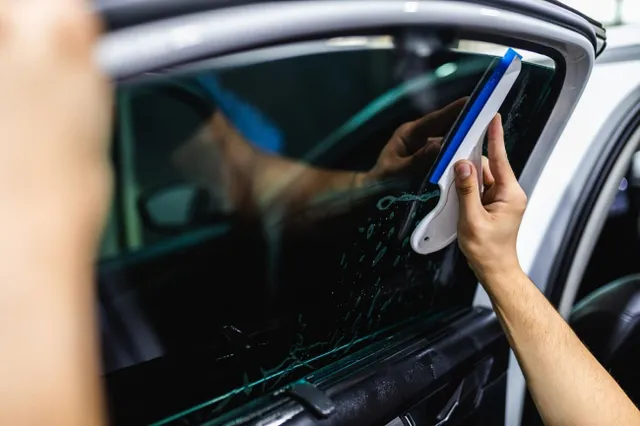Window Tint

Window tint overview
A window tint is usually made from polyethylene terephthalate (PET), a thermoplastic polymer resin of the polyester family, due to its clarity, tensile strength, dimensional stability, and ability to accept a variety of surface-applied or embedded treatments. The primary purpose of car window tinting is to prevent UV radiation. It is designed to reflect, absorb, radiate, and transmit these harmful UV rays.
Benefits of Window Tinting
Window tinting involves applying a thin film to the windows of vehicles or buildings for various purposes. Here’s an overview:
1. UV Protection: Window tinting blocks harmful ultraviolet (UV) rays from the sun, which can cause skin damage and fade interior furnishings.
2. Heat Reduction: Tinted windows can reduce the amount of heat that enters a vehicle or building, improving comfort and reducing the need for air conditioning.
3. Glare Reduction: Tinted windows can reduce glare from the sun, headlights, or other sources, improving visibility and safety.
4. Privacy: Tinted windows provide privacy by reducing visibility from the outside, which can deter theft and protect personal belongings.
5. Safety and Security: In the event of an accident or break-in, window tinting can help hold shattered glass together, reducing the risk of injury from flying shards and increasing security.
6. Aesthetic Enhancement: Many people choose window tinting for its aesthetic appeal, as it can enhance the appearance of vehicles or buildings.
Different Types of Car Window Tint
There are several types of window tint film:
Dyed Film: This type of film contains a layer of dye that absorbs solar heat and reduces glare. It’s one of the most economical options but may not be as effective in heat rejection as other types.
Metalized Film: Metalized window tint film contains small metallic particles embedded in the film layers. These particles reflect solar heat and provide excellent heat rejection properties. Metalized films also offer enhanced durability and UV protection.
Carbon Film: Carbon window tint film contains carbon particles dispersed throughout the film. It offers good heat rejection, UV protection, and glare reduction while maintaining a neutral appearance. Carbon films are known for their durability and color stability.
Ceramic Film: Ceramic window tint film is made from ceramic particles that are non-metallic and non-conductive. This type of film provides superior heat rejection, UV protection, and glare reduction without interfering with electronic devices’ signals. Ceramic films also offer high optical clarity and color stability.
